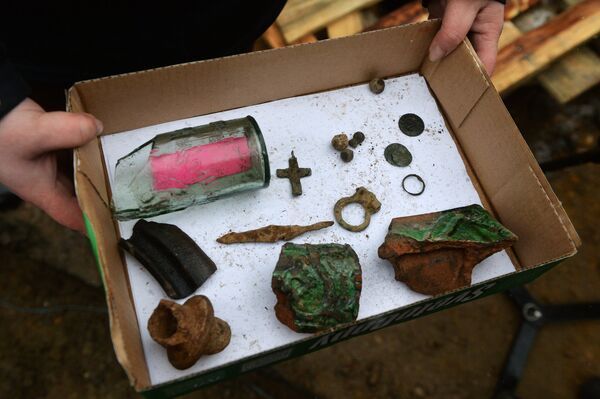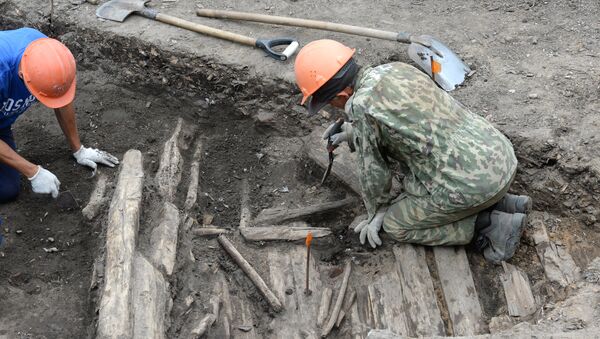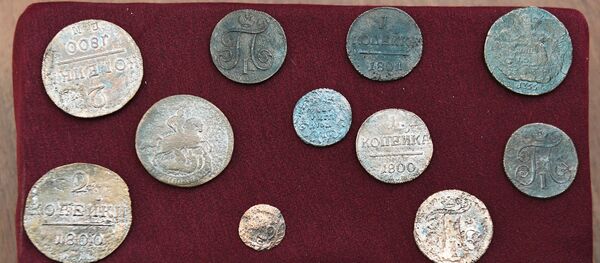According to a statement posted on the mayor’s office official website, sections of 17th century wooden pavement were discovered at a depth of about 1-2 meters below ground, beneath a layer of 19th century cobblestone pavement.
Furthermore, archaeologists have discovered a large number of smaller artefacts, including 17th-19th century horseshoes, 18th century copper coins, nails and pottery shards.

Most of the smaller finds date back to the 19th century, likely due to a fact that back then Lubyanka Square hosted a drinking fountain – a popular destination for pedestrians and coachmen alike.
Another notable discovery was also made in the vicinity of Staraya Square where archaeologists stumbled upon traces of filled ditches that were part of the Kitay-gorod Wall fortifications built in the 16th century in order to protect the city from a possible invasion by Crimean Khan.
A thorough search of the adjacent area has also revealed a number of smaller artefacts such as tile fragments, pottery shards and copper coins.

Alexei Yemelyanov, chief of Moscow’s Department of Cultural Heritage, said that all small artefacts need to be properly catalogued and studied before being put on display in the city museums.
He also added that the uncovered pavement sections and fortifications will be added to the city archaeological map and then buried again.
"This is a natural method of conservation for archaeological finds that helps preserve them for future study," Yemelyanov explained.


